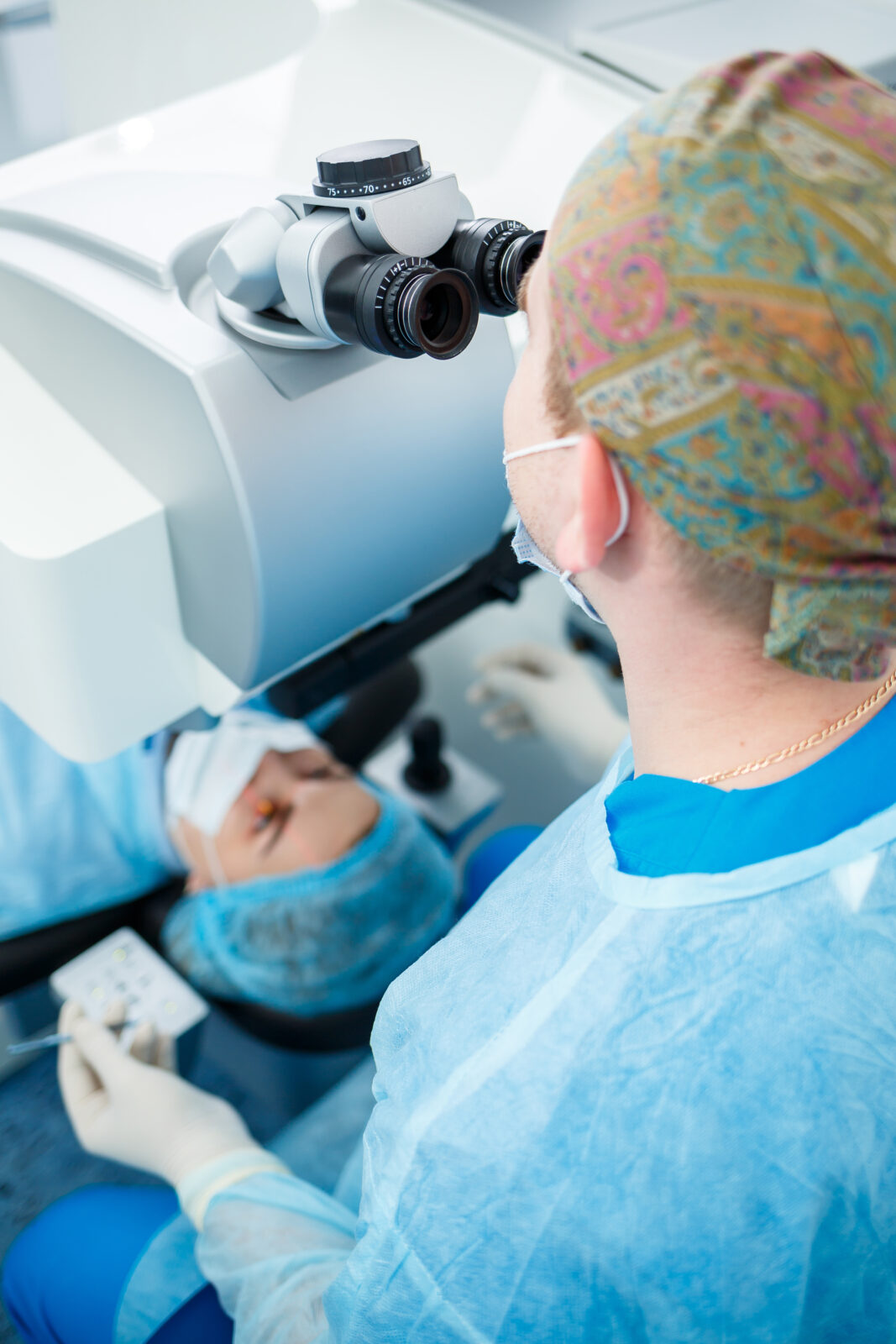What is Modern LASIK Laser Eye Surgery?
Modern LASIK eye surgery achieves remarkable patient satisfaction rates, surpassing 96 percent, placing it among the top-performing elective procedures in terms of patient satisfaction. Also referred to as refractive surgery or laser vision correction, LASIK stands for Laser-Assisted-In-Situ Keratomileusis. It is known for successfully improving vision problems such as:
About Modern LASIK
Modern LASIK ranks as the most performed elective surgery to correct refractive errors in North America. Modern LASIK is designed to address a range of vision problems, including nearsightedness (myopia), farsightedness (hyperopia), and astigmatism.
During the procedure, ophthalmologists, specialized medical doctors, follow a series of steps to change the shape of the front of the eye. Initially, they administer anesthetic eye drops to ensure your comfort. Subsequently, they create a thin protective corneal flap to access the inner corneal tissue. Then, computer-controlled laser pulses reshape the inner corneal layer to correct your vision prescription. Precise correction is maintained using an eye-tracking device. Finally, the flap is carefully repositioned, and shields are placed over your eyes to aid in natural healing.
Modern LASIK offers various forms to suit individual needs. Bladeless LASIK, for example, eliminates the use of blades and relies on a laser to create the corneal flap, offering a more personalized approach. Custom LASIK takes personalization further by utilizing Wavefront Technology to analyze your eye’s unique visual characteristics, tailoring the correction to your specific needs. Topography-Guided LASIK, including advancements like Contoura® Vision, utilizes advanced technology for an enhanced LASIK experience. These procedures increase the likelihood of achieving optimal vision, reduce visual disturbances, and potentially surpass results obtained with glasses or contacts.

In summary, Modern LASIK is a sought-after solution for correcting vision problems like myopia, hyperopia, and astigmatism. With advancements such as bladeless LASIK, Custom LASIK, and Topography-Guided LASIK, patients have access to personalized treatments that aim to optimize their potential for improved vision while minimizing potential visual disturbances. For personalized LASIK guidance based on your prescription, healing profile, and expectations, consult with an experienced ophthalmologist.
Who is a Candidate for Modern LASIK?
Modern LASIK eye surgery can be life-changing, but it’s important to know if you’re a good candidate. Here’s a quick overview of key criteria:
- Age: Generally 18+ to ensure prescription stability.
- Overall Health: Well-managed health conditions like diabetes are typically okay, but discuss any concerns with your doctor.
- Eye Health: Certain eye diseases like keratoconus or severe cataracts may disqualify you.
- Eye Conditions: Let your doctor know about lazy eye, muscle imbalance, recurring eye infections, or previous keloid scarring.
- Serious Eye Injuries: Wait for injuries to fully heal before considering LASIK.
- Pregnancy: Hormonal fluctuations can affect results, so wait until postpartum.
- Corneal Thickness: This is crucial for LASIK safety. Your doctor will measure it to determine your candidacy.
How Modern LASIK Works?
The procedure is performed by ophthalmologists, medical doctors who specialize in surgical treatments of the eye. Here is a general outline of the procedure:
- Anesthetic eye drops are applied to the eye.
- The LASIK surgeon creates a protective flap to access the inner corneal tissue. Your vision temporarily dims and blurs during this phase.
- Computer-controlled laser light reshapes the inner corneal layer to improve or eliminate your prescription. An eye-tracking device ensures precision.
- The surgeon repositions and aligns the flap to its original position, and protective shields are placed over your eye to aid natural healing.
- After LASIK, you may experience moderate discomfort and irritation for a few hours, but most patients are comfortable after a 2-4 hour rest.
After the Modern LASIK eye surgery procedure, patients feel moderate discomfort and irritation for a few hours, but most are comfortable after a nap and rest.
Like any surgery, a LASIK has risks and potential complications that are discussed during a surgical consultation prior to the procedure. For personalized LASIK solution tailored to your unique prescription, and expectations, schedule a Free LASIK consultation with your trusted LASIK expert today!
Sources:
Refractive Surgery Council. “LASIK Eye Surgery | Refractive Surgery Council,” August 9, 2022. https://americanrefractivesurgerycouncil.org/lasik/.
Chung, AKK, and AK Brahma. “LASIK Eye Surgery: Standard and Safety Issues.” Clinical Risk 12, no. 2 (March 1, 2006): 70–73. https://doi.org/10.1258/135626206776072622.
Refractive Surgery Council. “LASIK Recovery Time: What to Expect after LASIK?,” September 28, 2022. https://americanrefractivesurgerycouncil.org/what-to-expect-with-lasik-recovery/
Wilkinson, John M. “Refractive Eye Surgery: Helping Patients Make Informed Decisions About LASIK.” AAFP, May 15, 2017. https://www.aafp.org/pubs/afp/issues/2017/0515/p637.html.